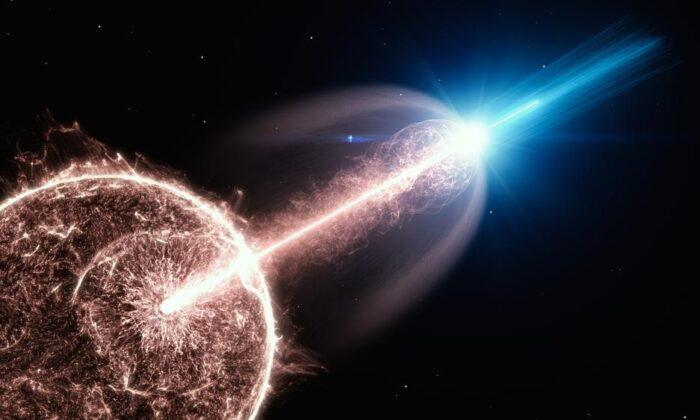An astronomical phenomenon called fast radio bursts (FRBs) has been getting a lot of attention, as a new telescope is able to detect them far more often than was previously possible.
These fast pulses of radio signals last only one to a few milliseconds, but on average they can release as much energy as our sun does in three days.
FRBs were first discovered in 2007, and scientists noticed the first FRB in archived data dating back to 2001. Since then, many more FRBs have been reported, but most of the detections are one of a kind, and hypotheses about their origins range from explosions in exotic astrophysical objects to mysterious alien radio messages.
Today, FRBs remain one of the most important unsolved mysteries in astronomy, but the number of detected FRBs has soared to more than 500 events in just one year due to the new telescope.
FRBs are very hard to detect, because their duration is so short and their locations are largely unknown. Detecting one typically requires pointing a radio dish at the sky and hoping to be lucky.
The CHIME telescope is designed to do just that. It comprises four massive cylindrical radio antennas that stare motionlessly at the sky. The telescope can see radio signals every day from half of the sky as Earth rotates.
“Digital signal processing is what makes CHIME able to reconstruct and ‘look’ in thousands of directions simultaneously,” Kiyoshi Masui, assistant professor of physics at MIT, said in the statement. “That’s what helps us detect FRBs a thousand times more often than a traditional telescope.”
Based on the CHIME catalog, the team calculated that bright FRBs occur at a rate of about 800 per day. This is the most precise estimate of the overall rate of FRBs to date.
“That’s kind of the beautiful thing about this field—FRBs are really hard to see, but they’re not uncommon,” Masui added. “If your eyes could see radio flashes the way you can see camera flashes, you would see them all the time if you just looked up.”
Among the 535 detected FRBs, scientists have identified 18 that burst repeatedly. These repeaters also look different from the others, with each burst lasting slightly longer and emitting more focused radio frequencies than other FRBs, which are non-repeating.
By mapping the location of the 535 FRBs, the CHIME collaboration found that the burst distribution was uniform, suggesting that the FRBs are spread throughout the universe instead of only in our Milky Way. This suggests that they are ubiquitous and unlikely to be from alien technology.
The team also estimated the distance of FRBs via dispersion and found that most FRBs likely originate from sources within distant galaxies. At such large distances, FRBs must have been produced by extremely energetic sources to be detected from Earth.
“FRBs also carry information about the medium that they travel through,” Dr. Saurabh Singh, a postdoctoral researcher in the Physics Department at McGill University and a member of the CHIME/FRB Collaboration, said in the press release. “With the significant increase in their detections over a range of distances from us, they potentially offer an independent measurement of matter distribution in the Universe.”
The increasing number of FRB detections also offers new insights into the cosmos.
“Having a large sample of FRBs unlocks countless possibilities. As one example, we are now in the era of using FRBs as cosmological probes,” Alex Josephy, a Ph.D. student at McGill University and a member of the CHIME/FRB Collaboration, said in the press release. “We can begin examining large-scale structures—clusters of thousands of galaxies. We can help map the distribution of cosmic dark matter and study the evolution of matter throughout our Universe’s history.”
Nevertheless, understanding the origins of these FRBs is the most important task right now, and it requires a lot of observation and theoretical modeling.
“Nearby FRBs, such as some of those described in the new CHIME/FRB catalog are inarguably the best sources to test models of the origins and properties of FRBs,” Mohit Bhardwaj, a Ph.D. student at McGill University and a member of the CHIME/FRB Collaboration, said in the press release. “If we want to learn the most about FRBs, like if they shine in optical or X-ray light, nearby FRBs are our best options!”




